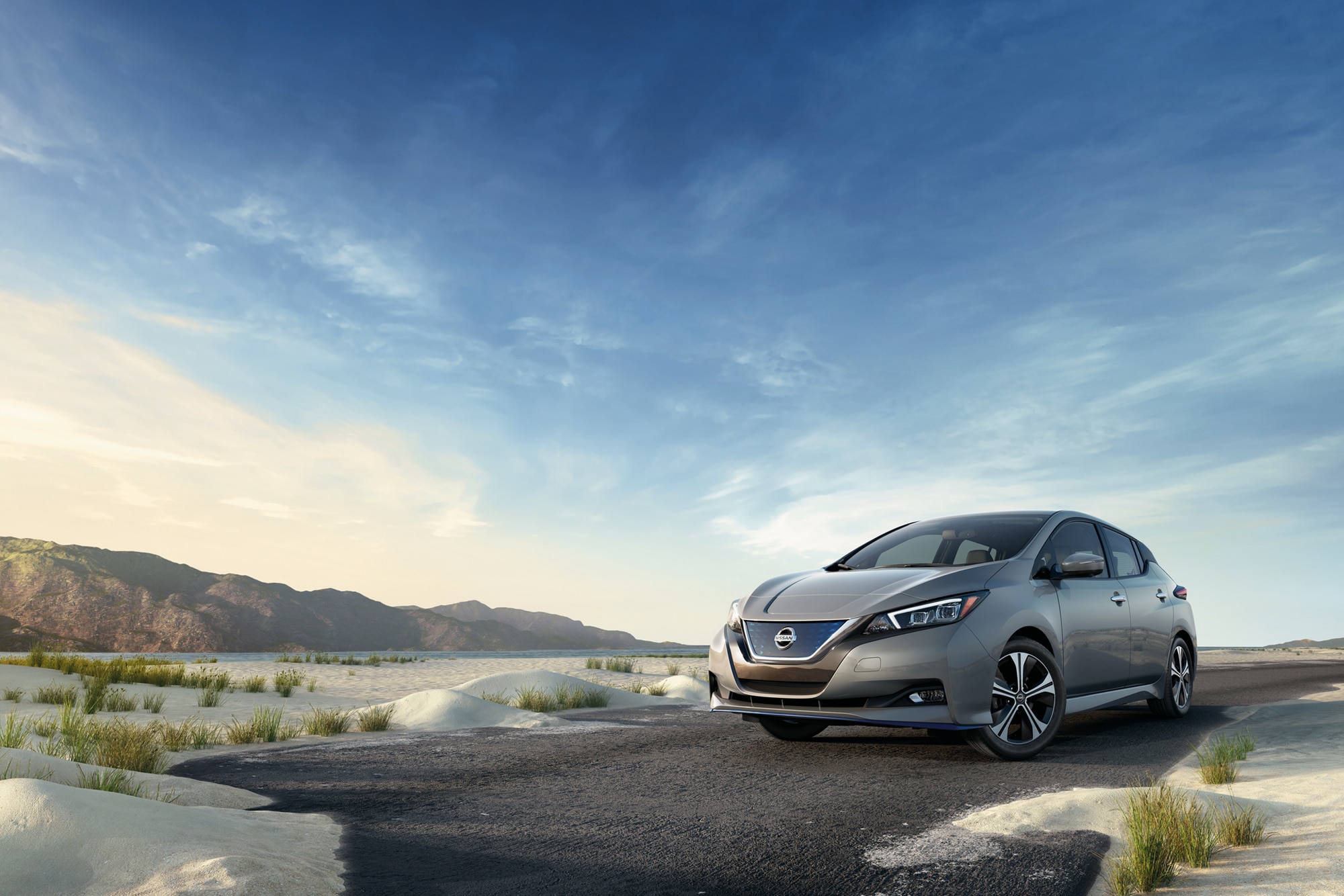What is an Electric Car?
Electric cars might look like a regular vehicle, but under the skin there are some big changes.
 Nissan
Nissan
At first glance, an electric car or EV, looks like any combustion-engine car. It operates more or less the same as well: You turn it on, shift into drive, and use a throttle and brake pedal to adjust your speed while using a steering wheel to, well, steer.
But what happens under the hood is vastly different from a traditional gasoline-powered car. Instead of an engine combining fuel, air and spark to turn controlled explosions into forward momentum, an electric car is surprisingly simple.
An EV has a large battery pack, typically built into the floor of the car, with the energy storage equivalent of thousands of iPhone batteries. It’s connected to one or more electric motors that then turn the wheels. There are some other elements to it, but one of the biggest advantages of an EV is the reduction of mechanical components. Cars with so few moving parts require much less regular maintenance. There’s also no oil to change.
Charging an Electric Car at Home
Because an EV has a battery rather than a gas tank, you won’t be spending any time at the pump. Instead, you’ll charge your car much like you charge your smartphone or laptop—only on a much bigger scale.
Most electric car buyers will want to charge at home with a dedicated charger installed in their garage or on the side of their house. If you live in an apartment or condominium, you may need to work with your landlord or homeowners association to determine if you’ll be able to charge near your parking spot. Without access to a home charger, EV ownership is a bit less straightforward than a gasoline car, and you’ll need to explore other charging options.
On the plus side, if you can charge at home, you can head out every day with a full “tank” of energy. Most new electric cars can travel 250 or 300 miles on a full charge, though some can go even farther than that. A few years ago, an average electric car could only travel 100 miles on a full charge, but technology has improved and prices have come down.
Charging an EV battery can take many hours, depending on the vehicle and what kind of charger you have, but generally speaking, you can expect to be ready to go after a night connected to a dedicated EV charger.
You can also charge at public charging stations, some of which are so-called Fast Chargers. There are a lot of different definitions of “fast,” but some of these stations can charge certain EVs from 10% to 80% in as little as 18 minutes.
Benefits and Drawbacks of EVs
This could take up its own article, but here are a few simple pros and cons to owning an EV:
Pros: Besides the lack of emissions, electric cars are exceptionally energy efficient, and electricity is often significantly cheaper per mile than gasoline. The Chevrolet Bolt EV has an MPGe rating of 120, whereas an efficient gas car like the Toyota Prius has an MPG rating of 52. EVs also require significantly less maintenance because they have less mechanical components and moving parts. Finally, because of how electric motors work, EVs often have much better acceleration and performance at the speeds most people drive than gasoline-powered vehicles.
Cons: EVs can’t go as far on a full “tank” as gasoline-powered vehicles do, and they take longer to recharge than pumping gas would. Also, public fast chargers can be hard to find in some areas of the country. In addition, the purchase price of EVs are often more expensive than comparable gasoline-powered cars, though there are often federal and state tax credits available depending on where you live and which vehicle you are looking to purchase.
Written by humans.
Edited by humans.
 Jordan Golson
Jordan GolsonJordan Golson is a transportation reporter covering cars, trains, planes, future cities, mobility and more — basically, if it moves and doesn’t go to space, he's on it. He is especially interested in the intersection of transportation and technology, and that means he goes deep into electric cars, autonomous vehicle tech, sensors, safety, connectivity, and similar topics.
Related articles
View more related articles